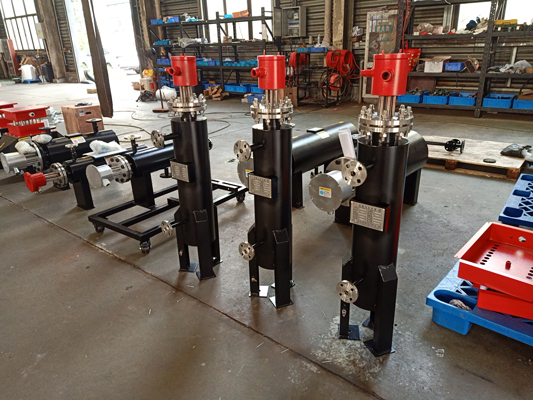The overall structure of the nitrogen electric heater must be designed in conjunction with the installation scenario, pressure rating, and safety standards, with particular emphasis on the following four points:

1. Pressure-bearing structure: Matches system pressure
Shell material: Consistent with or higher than the heating tube material (e.g., seamless stainless steel pipe for high-pressure scenarios, wall thickness must be calculated according to GB/T 150, with a safety factor of 1.2~1.5);
Sealing method: For low pressure (≤1MPa), use flange gasket sealing (gasket material options include oil-resistant asbestos or fluororubber); for high pressure (≥2MPa), employ welding sealing or high-pressure flanges (such as tongue-and-groove flanges) to prevent nitrogen leakage (nitrogen leakage is odorless and can easily lead to localized oxygen deficiency).
2. Fluid Channel Design: Ensure Even Heating
Flow channel diameter: Must match the nitrogen pipeline diameter to avoid excessive "diameter reduction" causing either excessively high local flow velocity (significant pressure loss) or excessively low flow velocity (uneven heating). Typically, the inlet and outlet pipe diameters of the heater should match the system pipeline or be one size larger;
Internal flow diversion: Large heaters require the design of "flow diversion plates" to guide nitrogen gas evenly through the heating tubes, preventing "short circuits" (where some nitrogen bypasses the heating zone directly, causing fluctuations in outlet temperature).
3. Insulation Design: Reducing Energy Consumption and Preventing Burns
Insulation Material: Select materials with high temperature resistance and low thermal conductivity, such as aluminum silicate wool (heat-resistant ≥800°C). The insulation layer thickness typically ranges from 50 to 200mm (calculated based on ambient and outlet temperatures to ensure the outer shell temperature ≤50°C, avoiding energy waste and personnel burns);
Shell Material: The outer layer of the insulation must be wrapped with a stainless steel shell (carbon steel/304 material) to enhance protection and prevent the insulation material from getting damp or damaged.

If you want to know more about our product, please contact us!
Post time: Oct-09-2025




